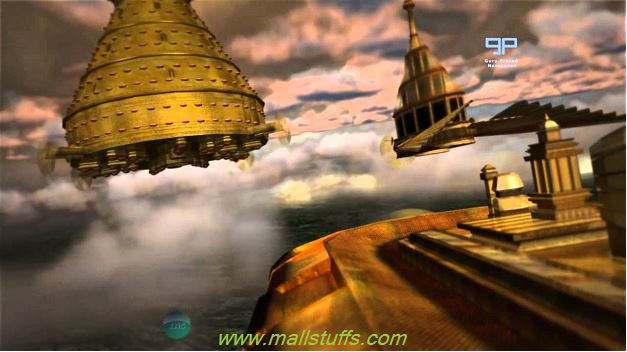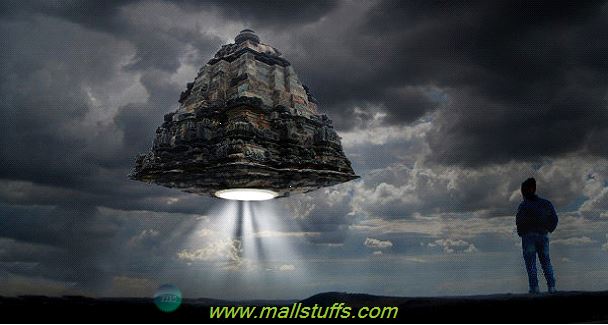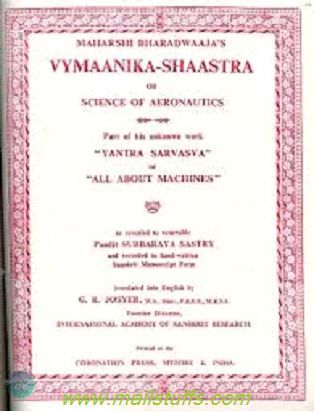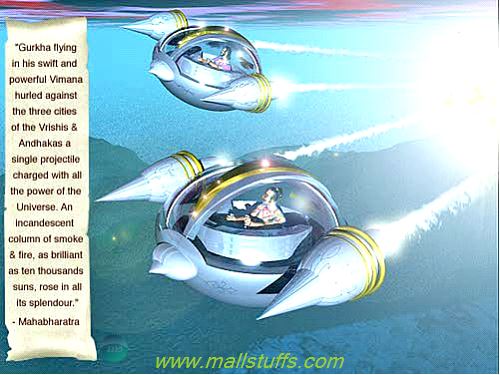
Vaimanika Shastra- the oldest scientific book on airplanes
Vaimanika Sastra- the science of airplanes
In 1875, Vaimanika Shastra, also known as “Brihadvimaana Shastra”, and dated to be at least 1000 years old, was rediscovered in a remote temple of Gujarat, India. Written by sage Bharadvaja, “Vaimanika Shastra” is the book entirely devoted to airplanes. Before I quote the description of vimanas in “Vaimanika Shastra” which may otherwise sound mythical to you, i will start by writing about sage Bharadvaja. So, who was saqe Bharadvaja?
Sage Bharadwaja- the pioneer of aviation technology
Sage Bharadwaja, a seer of the 6th Mandala of the Rig Veda, is the author of SrautaSatra, Ayurveda, mechanical treatises (Yantra Sarvasva) and many other ancient texts. He was the son of Sage Brihaspati and stayed in a holy city of Prayag(Varanasi). Sage Dronacharya, the invincible guru of the Pandavas and Kauravas, was the son of sage Bharadwaja. During their exile in forest, Lord Rama, Sita and Lakshman stayed in Sage Bhardwaja's ashram.
VIMANAKA SHASTRA is believed to be penned down by him way before the war of Mahabharata (3300 BC). Considered as the pioneer of aviation technology, His architectural designs and detailed descriptions has amazed thousands of aviation engineers around the world. His designs are perhaps the most complicated and sophisticated aeronautical design ever invented in the history of mankind.
He classified flying machines in three categories
1.) Earthly travel (flying on earth from one place to another)
2.) Interplanetary travel (Traversing from one planet to another)
3.) Universal travel (Traversing from one universe to another)

Translation of Vaimanika Sastra
Sage Bharadwaja was later referred by many other authors and researchers like Panini, kautilya, Dayanand saraswati etc. In 1973, “Vaimanika Sastra” was translated in English by G. R. Josyer with the help of “Pandit Subbaraya Shastry” and ”T.k Ellappa”. G. R. Josyer is the director of “International Academy of Sanskrit Investigation”, based in Mysore city of India. Below are some of the topics shared by G. R. Josyer
Secrets for the construction of airplanes, how to break, cut, fire and destroy planes
Secret to immobilize the airplane
Secret cloaking technology for the airplane
Secret to ascertain the direction of an aircraft approaching enemy
Secret of destroying enemy planes.
<>
Types of aircrafts and components/fuel used
In 100 sections spanning across eight chapters, Vaimanika Shastra had pictorial representations of three different types of aircrafts (traverses on air, water and land) including the apparatuses that are unaffected by fire, water and human mishandling. Aircraft that are unbreakable (abhedya), or fire resistant (adaahya) and unpenetrated (achchedya) have been described in details. It describes in details the design, architecture and mass manufacturing of flying airplanes. It includes information on 41 essential components of aircrafts and 16 natural elements using which these components were created for the construction of Vimanas. It also mention creation of alloys and other materials that shields the airplane from natural disasters and attacks from enemies.
Vimanas were parked in an isolated place named Vimana Griha(Airplane house) and were fueled by a yellowish-white liquid. Some author suggest this yellowish-white liquid to be gasoline while others suggest it to be complex compound made somehow by combining mercury and gasoline.

Vimanas, Image courtesy: www.oddx.com <https://www.oddx.com>
Guidelines for pilots
It included information on steering, use of solar energy, safety precautions, protection from enemies, protection from natural disasters like storm and lightening etc.
In chapter of Vastraadhikarana, there is a mention of dress code and wearables to be adhered during flying by pilots and passengers.
In section of Ahaaraadhikarana, there are various guidelines on food habits to be employed by a pilot for good health and safety considerations.
32 training secrets in Vaimanika Shastra
In secret written in "RahashyaLahari" by Lalla & others and also in Vaimanika Sastra, ancient pilots strictly needs to be competent in 32 training secrets to fly a Vimana. Taking off, ascending to sky, driving, halt, spectacular feats, crash, radar, solar energy and photography constituted those 32 secrets. These 32 secrets also included the techniques of aerial warfare like “shatruvimanakampanakriya”, meaning “shaking and destroying enemy aircraft” and “shatruvimananashanakriya”, meaning photographing enemy planes and making occupant unconscious. Below is the verse translation
"The pilot should have had training in maantrica and taantrica, kritaka and antaraalaka, goodha or hidden, drishya and adrishya or seen and unseen, paroksha and aparoksha, contraction and expansion, changing shape, look frightening, look pleasing, become luminous or enveloped in darkness, deluge or pralaya, vimukha, taara, stun by thunderstorm din, jump, move zig-zag like serpent, chaapala, face all sides, hear distant sounds, take pictures, know enemy maneuver, know direction of enemy approach, stabdhaka or paralyse, and karshana or exercise magnetic pull.”

Training course and certification of aircrafts pilots
After learning these 32 secretes from trained preceptors, pilots were certified to fly an aircraft. These 32 secrets are:
Maantrika; As prescribed in "Mantraadhikaara," acquire the powers of ghutikaa, paadukaa, visible and invisible and other mantras with potent herbs and efficacious oils, by invoking the mantras of Chhinnamasta, Bhairavee, Veginee, Siddhaamba, to construct aero planes, that cannot break, cannot be burnt, cannot be cut, and cannot be destroyed.
Taantrika: Endow the plane with special magical powers by acquiring Mahaamaaya, Shambara, and other potent tantric powers
Kritaka: Construct different models of airplanes by study of architects like Vishwakarma, Chhaayaaparusha, Mann, Maya and others.
Antaraala: Halting and protecting the plane from dangerous atmospheric currents, either occurring naturally or produced by enemy planes, using the installed devices that warns of such dangers spots
<>
Goodha: Hiding the Vimana from enemy by channeling the powers of Yaasaa, Viyaasaa, Prayaasaa in the 8th atmospheric layer of earth, to attract the darkness of the solar rays.
Drishya: The reflection of glow produced artificially in Vimana by the collision of electric power and atmospheric wind power, is caught upon by Vishwa-Kriyaa-darpana(Front mirror) to create a camouflaged Vimana.
Adrishya: Using “Vynarathya Vikarana” and other powers in the heart center of the solar mass, attract the force of the ethereal flow in the sky, and mingle it with the balaahaa-vikaranashakti in the aerial globe, to produce a white cover, that will make the Vimana invisible.
Vimukha: Turning the switch of the air mechanism after projecting the force of Kubera, Vimukha and Vyshawaanara poison powder through the third tube of the roudree mirror to produce insensibility and coma.
Paroksha: According to "Meghotpatthi-prakarana," or the science of creating clouds, by attracting the power in second of the summer cloud layers with the shaktya akarshana darpana (force-attraction mirror in vimana), and applying it to the halo of the Vimana, a strong force is generated that will oppose the enemy Vimanas and will put them out of action.
Aparoksha: According to "Shakti-tantra," Making the objects visible in front of Vimana by projection of the Rohinee beam of light
ViroopaKarena: Producing the 32nd kind of smoke through the mechanism stated in "Dhooma Prakarana," and then charging it with the light of the heat waves generated in the sky, and then whirling it to oil-smeared Vyroopya-darpana(special mirror) through “padmaka chakra” tube to create a terrifying shape of vimana that would cause utter fright to enemy pilots and onlookers.
Roopaakarshana: Seeing the interiors of an enemy plane on a television like screen through the photographic yantra installed in the Vimana.
Stabdhak: Discharging a gas using the stambhanayantra that makes the enemy unconscious by apasmaara poison smoke directed through the pipe attached on the northern side on the Vimana.

Sankocha, or Contraction: According to Yantraangopasamhaara section, seeing the danger ahead when the Vimana is flying at full speed, turning on the switch to contract the airplane extended wings and vital components.
Vistrita: According to 'Akaasha tantra', protecting the airplane from the central air flood in the third and first regions of the sky by turning on the switch in the 11th section of plane
Suroopa: As mentioned in "Karaka prakarana", applying snow-surcharged air to
13 kinds of Karaka force and then subjecting it to front side “pushpinee-pinjula” mirrors through the air conveying tube, a heavenly angel bedecked with jewels and flowers will appear to onlookers.
Jyotirbhaava: As prescribed in "Amshubodhinee" section, by attracting the 12th to the 16th digits of the solar glow and projecting them to the Mayookha section in the fourth pathway in the sky, and similarly by attracting the force of the etherial glow and combining it with the glow in the 7th layer of air mass, and then projecting both these forces to “guhaa-garbha” mirror through the 5 tubes in the Vimana, a rich morning like glow of the sun will be produced.
Tamomaya: As described in "Darpana Prakarana", turning on a switch to pass the utter darkness of the night through the Thamo-Yantra in the north-west side of the Vimana, by means of the dark force mirror.
Pralaya: As described in the magic book of destruction, produce a cataclysmic destructive event, by merging 5 kinds of smoke through the tube of the contracting machine in the front part of the Vimana and cloud-smoke mentioned in "Shadgarbha Viveka", and then pushing it by electric force through the five-limbed aerial tube.
Taara: Creating a star-spangled sky by mixing ethereal force 10 parts of air forte, 7 parts of water force, and 16 parts of solar glow, and projecting them by means of the star-faced mirror through the frontal tube of the Vimana.
Mahaashabda Vimohana: As stated in "Shabdaprakaashikaa", stun and tremble onlookers with fear by producing a crescendo of thunderous din by turning on the switch that concentrates different air forces in the seven tubes of the Vimana.
Langhana: As described in "Vaayutattvaprakarana", while crossing from one air stream into another, Vimana facing the baadaba glow of the sun usually catches fire. To prevent this and bring Vimana under safety, turn on the switch to conjoin the electric force and air force and centered them to the life-center of the Vimana
Chaapla: Turning the switch on in the front section of the pilot seat to create a high atmospheric wind of 4087 revolutions per hour speed thereby crashing the enemy plane.
<>
Sarvatomukha: Turn on the switch on top of vimana to revolve the airplane with great speed on all sides to destroy the formation of enemy planes attacking from all directions.
Parashabda Graahaka: As explained in "Sowdaamineekalaa", it’s a closed cabin in the plane where the installed sound receiver is fine tuned to trespass the conversation pilots of same plane or between pilots of different enemy planes.
Roopaantara: As stated in "Tylaprakarana," Anointing the distorting mirror in the Vimana by a special oil prepared by mixing griddhrajihwaa, kumbhinee, and kaakajangha oils and applying to it the 19th kind of smoke and charging with the kuntineeshakti in the Vimana, random shapes of animals like rhinoceros, lion, tiger, serpent, mountain, river etc will appear that will surprise and distract enemy observers.
Saarpa-Gamana: Moving airplane in a zig-zag serpent like motion by attracting the dandavaktra and other seven forces of air, and subjecting them to solar rays, and then turning on the switch to pass them through the zig-zagging center of the Vimana.

Kriyaagrahana: Turning on the key, a white cloth is made to appear at the bottom of vimana. By electrifying the three acids in the north- east part of the Vimana, and projecting them to the 7 kinds of solar rays, and passing the resultant force into the tube of the ‘Thrisheersha’ mirror, all activities going on below the ground, will be magnified and projected onto the front screen of the vimana.
Dikpradarshana: Turning the switch at the front of the Vimana to activate “dishaampati yantra” that will show the navigation route following which the enemy plane is approaching.
Aakaashaakaara: As described in "Aakaasha-tantra", making the plane indistinguishable in the sky by smearing the outer body of the plane with solution made of black mica, neem and bhoonaaga decoctions and exposing to solar rays.
Jaladaroopa: Hiding Vimana by creating a cloudy layer using the smoke generated by solution made by mixing bilva or bael oil, pomegranate juice, copper-salt, kitchen smoke, granthika or gugul liquid, mustard powder, fish scale decoctions, adding sea-shell and rock-salt powder, and exposed to solar heat enveloping the cloudy cover.
Karshana: When the formation of enemy planes comes together to attack one Vimana, by switching on the keys to set aflame the “Jwaalineeshakit yantra” in Vyshwaanara-naala (pipe) located at the naval of the plane, a powerful shakti(fire) of 87 degree Celsius is produced that envelops and destroys all enemy planes.
<>
Bibliography and missing references
In his book, Bharadwaj refers to more than 70 authorities and 10 experts on air travel, sources for which are nowhere to be found. “Vaimanika Sastra” also has a bibliography section where sage bharadwaja has stated names of six different treatises written by six different unknown authors. These six treatises along with author names are:
Vimana Chandrika by Narayana muni Vyoma
Yana Mantrah by Shaunaka
YantraKalpa by Garga
Yana Bindu by Vachaspati
KhetaYaanaPradeepika by Chaakraayani
VyomaYaanarkaPrakasha by DundiNatha.
This means before the era of bharadwaja and after him, there have been many Sanskrit writers who have wrote extensively on airplanes and science of aeronautics. Though Vaimanika Sastra was found one century ago in 1875 and none of the above treatises have been found till now, Researchers are quite hopeful that they would be successful in finding more text related to ancient aeronautics albeit there are chances that many of them was either burned down by British rulers or was smuggled out of India by ruling British administration.
<>
Research and training program by modern scientists
Aeronautical Research Development Board directed “Academy of Sanskrit Research” in Mandya to conduct a one-year research course on “Vaimanika Shastra” to study ‘Non-conventional approach to Aeronautics’.

This course proved to be extremely fruitful as one of the researcher “Prof Dongre” from BHU (Banaras Hindu University), was successful in creating a glass-like material that remains undetected to radar. A plane prototype was later designed using this material and was found to be untraceable by radar. He also circulated a research paper named “Amshubondhini” to further intensify the holistic approach towards the development of aeronautical technology in India.
Summary:
Thus, as we have seen above, Vaimanika shastra is a full proof book written by great souls and further extended by experienced professors based on their long term research and analysis. This was just a short introduction to “Vaimanika Shastra”. Wait for my text article where i will enlist the different kinds of airplanes model described in “Vaimanika Shastra”.
Note: Images used on this website
are either a production of Bhaktivedanta Book Trust(https://www.krishna.com), Iskcon
Foundation or were found in google search under "Free to use and share". If any
of the images presented here violates copyright issues or infringes anyone copyright
or are not under "Fair use", then please bring it to our notice. Read
Disclaimer for more.
Share this to your friends. One of your friend is
waiting for your share.
Related Articles
Example of historic examples against present caste based system
Bhagavad gita Chapter 1,verse 1 english and hindi poetic translation with learnings
Proving historicity of Krishna-Archaeological and astronomical evidences
Types of ancient vimanas
Cheating and Deception by lord krishna
Vaimanika Shastra- the oldest scientific book on airplanes
Science in Hinduism - Speed of light
Proof of Lord krishna existence-1
Post Comment